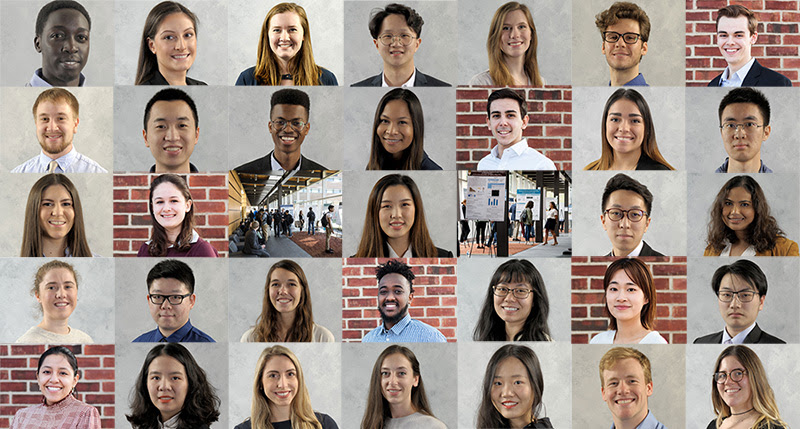
Student: Rebecca Lentz
Project: GaN/AlInO Waveguides for Visible Light Communications | View Poster (PDF)
Institution: Lehigh University
Major: Electrical and Computer Engineering
Advisor: Jonathan Wierer
Abstract
Here a new oxidation process is used to transform AlInN to AlInO and form waveguides in III-nitride semiconductors. This process uses wet thermal oxidation (H2O/N2 at 800 - 900 °C) to form dense, insulating, and thick AlInO. This AlInO has a refractive index of n ~ 1.7 at λ=405 nm, making it ideal as a cladding layer for GaN, which has a refractive index of n ~ 2.4. To produce the waveguiding structure, a thick layer (> 200 nm) of AlxIn1-xN is grown lattice matched (x~0.82) on a GaN layer by metalorganic chemical vapor deposition (MOCVD). This is followed by a thin GaN core layer which is then post-growth patterned and etched to form waveguiding strips. The AlInN is then oxidized laterally, beginning on the exposed AlInN and proceeding underneath the GaN core to create the AlInO lower cladding. This air/GaN/AlInO waveguide is simulated using COMSOL multiphysics modeling software to determine mode characteristics and dimensional requirements. The structure is designed for single-mode propagation of blue laser light (λ=405 nm), but could potentially guide light in the infrared spectrum, if designed with the proper dimensions.
About Rebecca Lentz
Rebecca Lentz is a senior studying electrical engineering at Lehigh University with a focus in semiconductor materials. She began researching under the guidance of Professor Jonathan Wierer the summer after her sophomore year and plans to continue past receiving her bachelors by pursuing a PhD in the field. For this research she has received the Clare Boothe Luce Research Scholarship and Honorable Mention for her presentation at the David and Lorraine Freed Undergraduate Research Symposium in 2018. Additionally, she is a Rossin Junior Engineering Fellow, President of Eta Kappa Nu, Vice President of the IEEE student chapter and is a recipient of the Joseph C. Gabuzda Memorial Award for outstanding achievement in Electrical Engineering at Lehigh.


